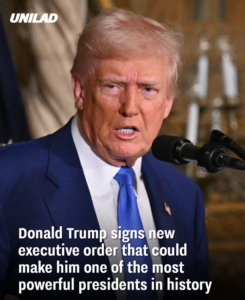President Donald Trump has signed an executive order aimed at increasing White House oversight of independent federal agencies, including the Securities and Exchange Commission (SEC), Federal Trade Commission (FTC), and Federal Communications Commission (FCC). This directive mandates that these agencies submit draft regulations, strategic plans, and budget requests to the White House for review, thereby enhancing presidential control over their operations.
Implications of the Executive Order
The executive order is grounded in the unitary executive theory, which asserts that the president holds comprehensive authority over the executive branch. By extending this control to independent agencies, the order seeks to ensure that these bodies align with the president’s policy agenda. Critics, however, argue that this move undermines the independence of agencies designed to operate free from political influence, potentially leading to conflicts of interest and reduced accountability.
Potential Legal Challenges
The expansion of presidential authority over independent agencies is expected to face legal challenges. Opponents contend that such a consolidation of power may violate constitutional principles that establish checks and balances among the branches of government. The outcome of these challenges could significantly influence the future balance of power between the executive branch and independent regulatory bodies.
Broader Context
This executive order is part of a series of actions by the Trump administration to assert greater control over various aspects of governance. For instance, on January 20, 2025, President Trump signed Executive Order 14162, directing the withdrawal of the United States from the Paris Agreement and related international climate commitments. Additionally, on January 21, 2025, he signed Executive Order 14173, prohibiting private organizations from conducting Diversity, Equity, Inclusion, and Accessibility (DEIA) employment programs for jobs created by federal contracts.
Conclusion
President Trump’s recent executive order represents a significant shift in the relationship between the executive branch and independent regulatory agencies. While it aims to streamline governance and ensure alignment with the administration’s policy objectives, it also raises important questions about the balance of power and the potential for political interference in regulatory processes. The forthcoming legal challenges will be pivotal in determining the extent to which the executive branch can exert control over these independent entities.


